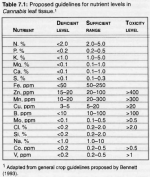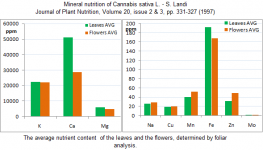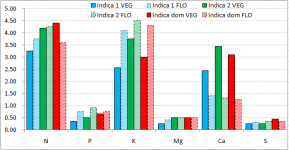@ Tester,
Thanks for that great post, for the next graph and for correcting my math; also thanks for providing the more accurate data for N, P2O5 and K2O.
About the Lucas formula, etc., I used 1 liter containers to find the data about GH3's mix, my mix and Lucas's mix from GH ferts.
To anyone not familiar with Lucas's formula, he suggested it to be used all the way from veg to harvest. I also use my mix from veg to harvest.
Thanks for that great post, for the next graph and for correcting my math; also thanks for providing the more accurate data for N, P2O5 and K2O.

About the Lucas formula, etc., I used 1 liter containers to find the data about GH3's mix, my mix and Lucas's mix from GH ferts.
To anyone not familiar with Lucas's formula, he suggested it to be used all the way from veg to harvest. I also use my mix from veg to harvest.


 come on man
come on man 







